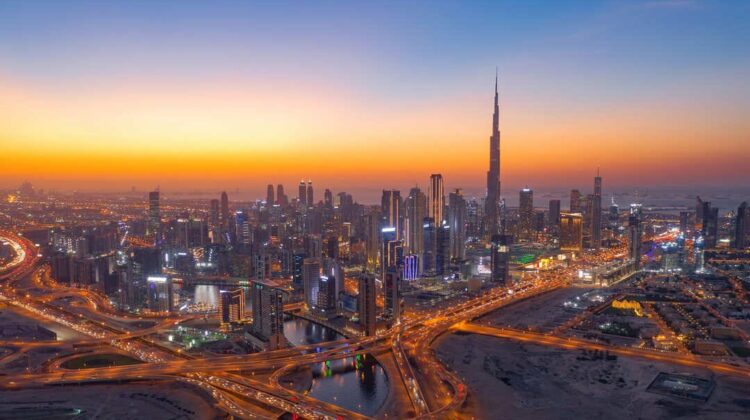
Asian Architecture: A Symphony of Heritage and Progress
Asian architecture stands as an eloquent expression of the continent’s profound cultural legacy and its forward-looking ingenuity. This seamless interplay between ancient traditions and pioneering innovation has birthed some of the world’s most awe-inspiring and structurally ambitious edifices. From majestic temples and imperial palaces to avant-garde skyscrapers, Asian architecture reverently preserves its historical roots while leading the charge in global architectural trends.
The Historical Pillars of Asian Architecture
Asia’s architectural narrative is firmly anchored in the philosophies and traditions of its ancient civilisations. Each region showcases distinctive styles, shaped by unique cultural, religious, and environmental influences.
- Chinese Architecture
China’s architectural heritage epitomises symmetry, symbolism, and meticulous craftsmanship. Key hallmarks include:
- Pagodas: Multi-tiered towers often linked to Buddhist sanctuaries, embodying spiritual ascension.
- Courtyard Houses (Siheyuan): Harmoniously designed family dwellings, reflecting Confucian ideals of unity.
- The Forbidden City: An imperial masterpiece of the Ming Dynasty, signifying celestial order and imperial grandeur.
- Japanese Architecture
Japanese design champions simplicity and a symbiotic relationship with nature. Hallmark features include:
- Wooden Frameworks: Ingenious timber structures resilient against seismic forces.
- Zen Gardens: Landscapes crafted to evoke tranquility, often interwoven with architectural elements.
- Shinto Shrines: Understated yet profound structures mirroring spiritual purity and reverence for nature.
- Indian Architecture
India’s architectural tapestry is a blend of intricate ornamentation, spiritual motifs, and vibrant hues. Iconic elements include:
- Hindu Temples: Exquisite carvings and soaring spires (Shikhara) embodying cosmic aspirations.
- Mughal Monuments: A synthesis of Persian and Indian aesthetics, exemplified by the ethereal Taj Mahal.
- Stepwells: Ingenious subterranean structures like the Rani Ki Vav, merging utility with artistry.
Modern Marvels: Asia’s Architectural Renaissance
Asia’s rapid urban transformation and technological prowess have propelled it to the forefront of architectural innovation. The continent’s skylines are a testament to this dynamic evolution.
- Vertical Wonders and Urban Mastery
Asia has redefined the art of vertical construction with its cutting-edge skyscrapers:
- Burj Khalifa (Dubai): The tallest structure globally, embodying engineering audacity.
- Taipei 101 (Taiwan): A modern homage to the traditional pagoda, marrying culture with advanced materials.
- Shanghai Tower (China): An eco-conscious spiralling skyscraper that masterfully mitigates wind forces.
- Sustainable Design Principles
Environmental stewardship is at the heart of contemporary Asian architecture:
- Green Facades: Iconic examples include Singapore’s Gardens by the Bay and the lush Bosco Verticale in China.
- Passive Cooling: An amalgamation of traditional wisdom and modern efficiency to minimise energy consumption.
- Smart Urban Planning: Projects such as Masdar City in the UAE exemplify low-carbon, tech-integrated living.
- Boundary-Pushing Materials and Techniques
From carbon fibre to bamboo, Asian architects are experimenting with diverse materials to craft structures of unparalleled complexity, often realised through parametric design technologies.
- Cultural Continuity in Modern Designs
- Modern Asian architecture reverently integrates cultural motifs, maintaining a dialogue between heritage and innovation.
Melding History with Modernity
Designers frequently reinterpret traditional themes:
- The National Museum of Qatar: Drawing inspiration from the desert rose, blending natural form with cultural essence.
- Beijing National Stadium (Bird’s Nest): A lattice-like steel marvel reminiscent of ancient Chinese artistry.
- Spiritual Resonance in Contemporary Forms
The spiritual ethos of Asian architecture endures, even in cutting-edge projects:
- Lotus Temple (India): A striking embodiment of purity, inspired by the sacred lotus flower.
- Wat Rong Khun (Thailand): A modern interpretation of Buddhist architecture with unconventional flourishes.
Challenges on the Horizon
Despite its triumphs, Asian architecture faces pressing challenges in the 21st century:
- Urban Congestion: Escalating population densities necessitate innovative, space-efficient housing solutions.
- Climate Resilience: Designing structures that endure extreme weather while reducing environmental footprints is paramount.
- Preservation vs. Progress: Striking a balance between conserving heritage sites and embracing modernity remains an ongoing struggle.
A Global Legacy of Influence
The architectural wisdom of Asia has permeated global design sensibilities, offering lessons in simplicity, sustainability, and cultural synthesis:
- Minimalist Elegance: The understated aesthetics of Japanese Zen have influenced global modernism.
- Sustainable Techniques: Green roofs and passive cooling, pioneered in Asia, are now widely adopted worldwide.
- Cultural Hybridity: Asia’s artful fusion of tradition with innovation inspires architects globally to reimagine their cultural narratives.
Conclusion
Asian architecture is a compelling odyssey through time, seamlessly bridging the ancient and the contemporary. Its ability to honour tradition while pioneering innovation positions it as a luminary on the global stage. As Asia continues its ascendancy in cultural and economic spheres, its architectural ethos will undoubtedly shape a future where creativity, sustainability, and heritage converge in harmonious splendour.
Author: Donglu Shih
Expert in Asian culture and economics. She collaborates with major companies in the field of international relations. Collaborates with The Deeping on Asian political topics

